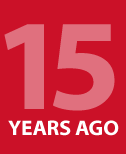Maximizing Exposures

‘I take a lot of pictures of my work – so many, in fact, that friends and colleagues often tease me about it.’ That’s how David Tisherman opened his Details column of June 2003, broaching a subject near and dear to his heart.
‘[W]hat may seem like an obsession to others seems like good, commonsense business practice to me. In fact,’ he continued, ‘I believe that every single designer and builder involved in the creation of quality watershapes should record his or her work photographically – and should make a point of doing so in a way that reflects appropriate levels of quality and professionalism.’
***
‘[T]he adage that says “One picture is worth a thousand words” is probably truer for the watershaping trades than any other I can think of. . . . [I]t’s tough to overstate the importance of photographs when it comes to working with clients, potential clients and other design and construction professionals.’
***
‘I can’t spin out words that come anywhere close to capturing the visual nuances, textures and colors of my custom watershapes and landscapes. The language is simply inadequate to convey the information a customer receives by viewing a well-composed, well-photographed image on a quality photographic print.’
***
‘And it’s not simply the finished “beauty shots” that come into play in this visualization process. On projects where a design team of some kind is involved, for example, there are real advantages to . . . giving one and all a detailed visual description of exactly what is involved in building an ambitious design. With those professionals and homeowners alike, such presentations of construction and engineering details make it clear why a project might cost more than anyone at the table initially thinks it should. . . . [T]hey understand more fully what I mean and gain an appreciation for the level of sophistication of the work that’s being planned.’
***
‘I don’t know too many others in the trade who do this, and I can’t help thinking that those of you who don’t use this tool are missing out on a tremendous opportunity to clarify tricky construction issues before a project ever gets going. . . . My [photos] let me walk subcontractors, who have no familiarity with the sort of construction process they’re about to get involved in, right through the procedures we’ll follow, step by step. In that sense, past projects become templates for current work and help me make certain everyone – clients included – is on the same page.’
***
‘There are still other reasons for recording what you do: A record of a project’s construction can come in quite handy, for example, if you’re ever called to remodel an old job or perform major repairs. And, although I’ve never had to use my slides in this context, I’ve always known that if I ever found myself in a lawsuit, I’d have the visual proof of exactly how the project was constructed, in amazing, bullet-proof detail.’
***
‘Finally, there’s much to be said for maintaining a record of your work for its own sake. In fact, if you’re in the business of creating works of art and water, I’d say you owe it to yourself and anyone who might seek to know more about your work that you have a permanent visual record of your projects. You never know: Someday you might become famous and someone might want to assemble a book about your work or stage an exhibition.’
***
‘And when I say I shoot everything, I really mean it. I photograph the site before I start, I take shots after excavation to help me understand soils conditions, I document the framing and plumbing and steel, the electrical installation and the structural details of raised bond beams or thermal ledges. I also shoot the application of all finish materials as well as the work of landscapers and lighting contractors. If it’s part of the project, I want to record it, simple as that.’
***
‘The way I see it,’ David concluded, ‘getting into photography in a serious way offers benefits you can’t even anticipate. Personally, I think taking pictures is fun, and I appreciate that it’s given me a distinctive, clear way to show off and communicate about my work. And hey, what’s the point of creating beautiful works of art if you can’t share them every now and then?’
With the advent of digital photography, recording anything and everything has become much easier. Have you taken advantage of this and joined David in recording your work in detail? Please let us know your photography story by commenting below!
David Tisherman is the principal in two design/construction firms: David Tisherman’s Visuals of Manhattan Beach, Calif., and Liquid Design of Cherry Hill, N.J. He can be reached at [email protected].He is also an instructor for Artistic Resources & Training (ART); for information on ART’s classes, visit www.theartofwater.com.










